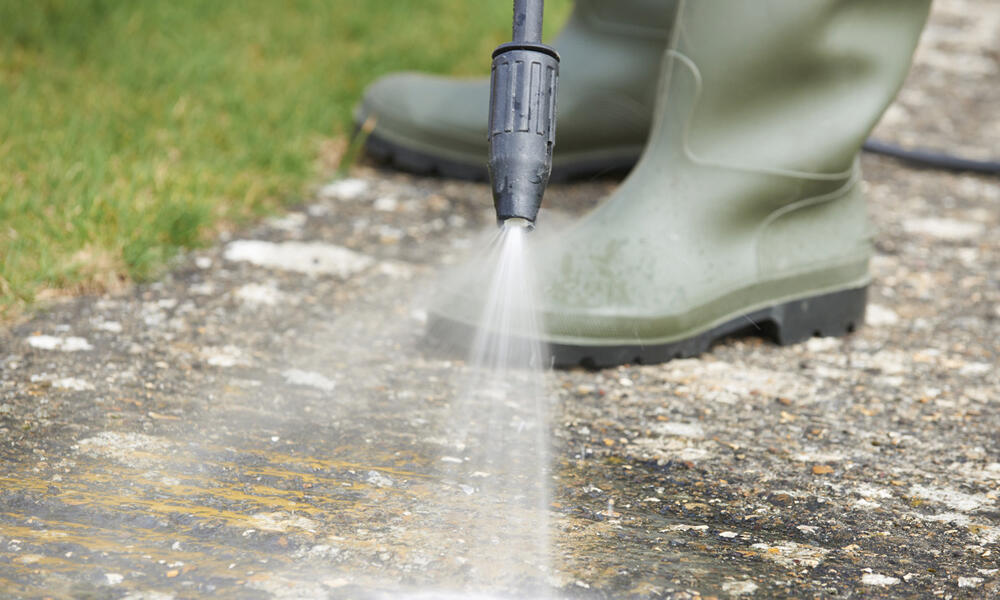Lichens are neither moss nor plants, but unfortunately an absolute success model of nature. Because the stains are stubborn and resist many cleaning attempts. With these tips, however, you can still get rid of lichens.
Contents
What are lichens?
Even though lichens are usually mentioned in connection with moss and green coverings, they are something quite different – a collective of fungus and algae, sometimes with bacteria mixed in. The fungus gets from the chlorophyll-containing algae their sugary photosynthetic products. In return, the fungus gives the algae water and minerals that they would otherwise not get due to the lack of roots. In addition, the fungus keeps the algae moist and protects them from desiccation and mechanical damage with its fungal body.
Depending on the species, the lichen body is a simple crust or also a branched, coral-like structure. White, yellow, orange, brown, green or gray – the color spectrum of lichens is huge and often really bright.
Lichens grow in the garden as localized crusts on the surface of stones, on walls, buildings or on roof tiles, as well as on trees in the garden. On trees lichens do not harm and you do not need to remove them. If they are a nuisance, simply scrub the formations with a wire brush or other hard bristle brush to remove them.
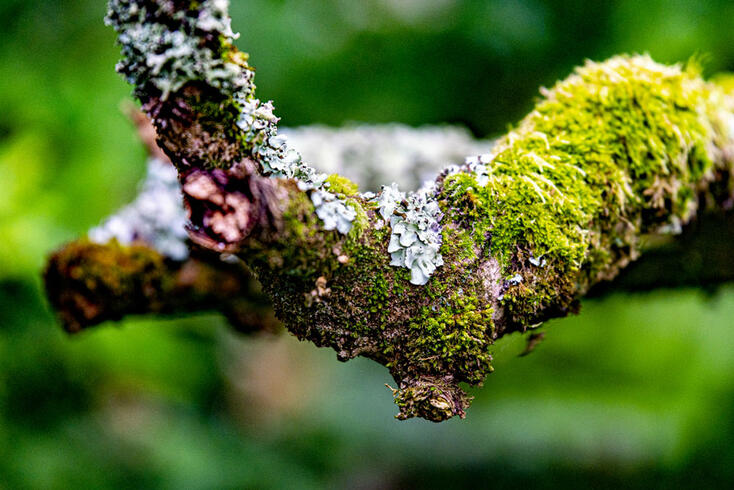
Why remove lichens?
On stones or figures in the garden, lichens are no longer a nuisance; they even look good there as a living patina and give the objects a romantic appearance. However, the fungi involved may cause health problems in sensitive people after direct contact.
On sidewalks, driveways, the terrace and especially outdoor stairs, things look quite different. There, lichens not only look ugly, but can also become quite slippery in wet weather, like moss, and pose a considerable risk of accidents. A single lichen will not be a problem, but where one settles, others will gradually come and grow. Wherever you find new and thus still small lichens, you should remove them. The sooner, the better.
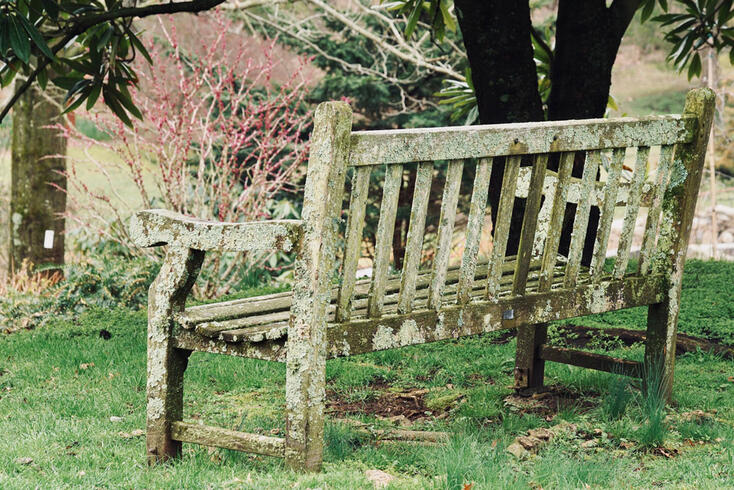
Lichens secrete so-called organic acids, so-called lichen acids. These attack the subsoil rocks and cause them to weather. In nature, this is a fine thing; it creates new soils and thus new habitats. On paths, terraces and stairs you don’t want that, it gives stains, cracks on the surface and eventually everything crumbles. Lichens on house walls damage in this way the paint and eventually also the masonry. So it is better to remove the lichens.
Where do lichens come from anyway?
In short, simply from the air. Because like fungi, lichens also reproduce with spores. And they are so small and light that they can easily travel long distances through the air with the wind. Like moss, lichens love moist surfaces. If lichen spores fall on permanently damp or at least regularly damp places, they germinate and a lichen begins to grow. It does not necessarily have to be the weather side of a house or other rain-exposed areas; regular morning dew is enough.
Why are lichens so persistent?
The teamwork between fungus and algae is so successful that lichens are virtually indestructible, living for hundreds of years and easily withstanding drought and extreme temperatures – and, unfortunately, many cleaning methods. Conventional green lichen removers for garden paths usually don’t get you anywhere.
Anyone who has tried to wipe or scrub lichens from paved areas or outdoor concrete steps will be surprised at how stubbornly the lichens take hold and often come back even after mechanical removal with a scrubber or wire brush. There’s a simple reason for this: removing lichen is simply trying to remove fungus. Even if you have removed the visible part, spores or tiny remnants of the fruiting body usually remain. And they just keep growing. Liquid cleaners for removing lichens therefore have an advantage and can remove them completely, sometimes home remedies also help.
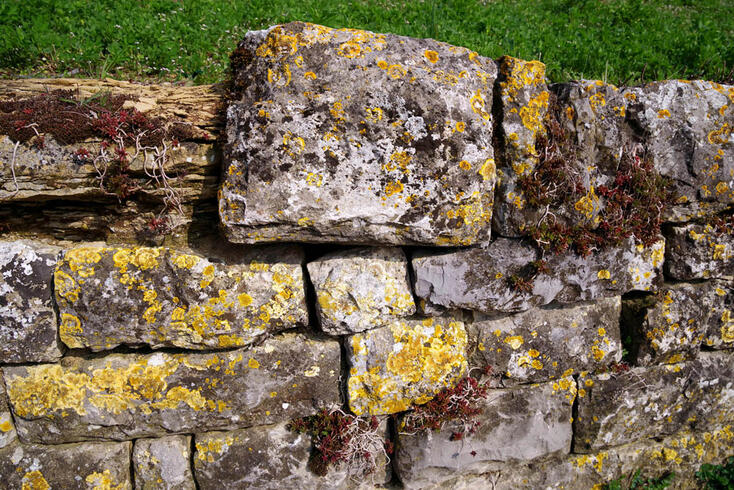
How to remove lichen from paths, driveways or terraces?
Whether you remove lichens from terraces, paths or walls, the methods do not differ from the place of application. Suitable for removing lichens are both chemical agents and liquid home remedies. It is important to make sure that they are approved for the particular application and that no agent can flow directly into flower beds, the garden pond or even gullies. Biocides in particular can be toxic or corrosive. Algae and green coat removers with nonanoic acid or similar active ingredients also remove moss, but not lichens. On the other hand, the active ingredients are biodegradable.
In general, always try cleaners on stones first in a concealed area to prevent damage to the patio or other surfaces from contact and subsequent dilution with water.
Remove lichens mechanically
Remove new lichens quickly. As soon as you notice suspicious areas and stains on the stones, remove them with plenty of water and a wire brush or, for more delicate stones, other hard-bristled brushes. This is often enough. If lichens have already spread over a larger area, it becomes tedious with the wire brush.
For larger areas and insensitive stones, you can use powerful high-pressure cleaners and simply shoot the lichen off the stones with water or, depending on the device, with hot water. But really only with insensitive stones, because quite a lot of pressure is needed. This is not possible with soft stones such as limestone or sandstone, whose surface can get the finest cracks and thus even favor lichen and moss. First set the high-pressure cleaner to low pressure and increase it if the lichens do not react to it. If the pressure cannot be adjusted on the pressure washer, clean from a distance first and then approach the stones. Hold the pressure washer on the lichens from different directions, not just from above. Otherwise you will still press them into the surface.
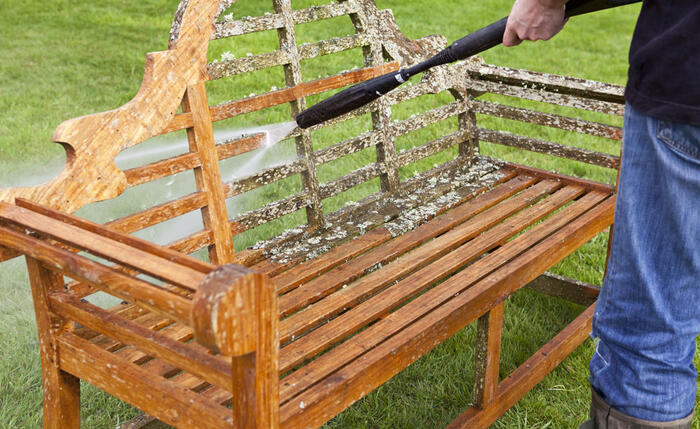
Home remedies against lichens
Spray and scrub: Useful home remedies against lichen in the early stages are wine vinegar or fruit vinegar – the very cheap ones. However, its use as a biocide is legally in an absolute gray area and completely prohibited against plants in joints. Spray on the vinegar, let it soak in and brush away the lichen with plenty of water.
A similar home remedy is soda (baking soda), of which you dissolve 30 grams in ten liters of boiling water, then pour it on the lichens and let it act.
You need to repeat the application after a day or two. With old lichens it is not so easy. The best chance of success is to remove the lichen with a pressure washer or wire brush after contact with the home remedies.
Heat to remove lichens
In addition to moss, weed burners also kill lichens, which are then relatively easy to scrub off. However, contact with the flame must be quite long, so that the stones can discolor.
Chemical lichen removers for cleaning
The use of special chemical lichen removers everyone must decide for themselves. As a rule, the agents work, decompose lichen and also destroy the fungal spores – in principle, you disinfect the stones, because the connection between the algae and the fungus is cracked. Be sure to follow the manufacturer’s intended use, usually you apply the agents, let them soak in, and then you can easily remove them with water and a scrubber. The cleaners often also prevent the reestablishment of lichens through special substances. Most often, this also allows you to remove moss at the same time.

